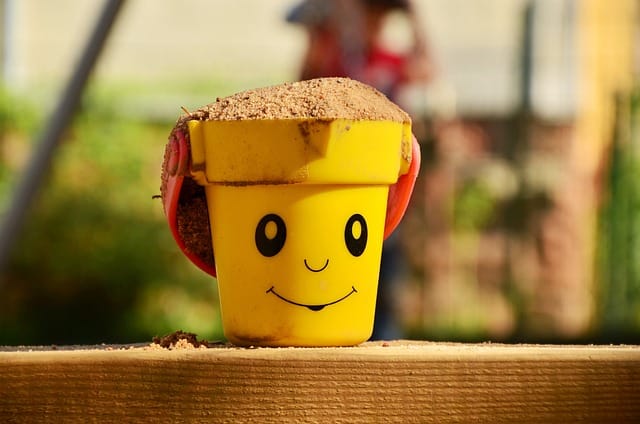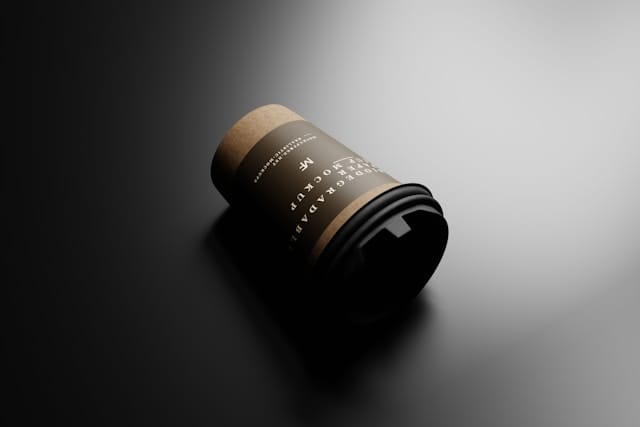Polylactic acid PLA plastic has become increasingly popular in recent years, particularly in the realms of 3D printing, packaging, and sustainable product design. As a biodegradable thermoplastic derived from renewable resources such as corn starch or sugarcane, polylactic acid (PLA) plastic represents an eco-friendly alternative to traditional petroleum-based plastics. In this blog post, we’ll delve into ten essential facts about polylactic acid (PLA) plastic, covering its properties, applications, benefits, and limitations.
Understanding the characteristics and implications of polylactic acid (PLA) plastic is crucial for designers, manufacturers, and consumers alike. As we strive for sustainability in an ever-growing plastic landscape, knowing the facts about polylactic acid (PLA) plastic can help us make informed choices. Let’s explore this fascinating material in detail.
What Is Polylactic Acid PLA Plastic?
Polylactic acid (PLA) plastic is a bioplastic that is created through the fermentation of carbohydrates. It is synthesized from renewable resources, making it a more environmentally friendly option than many traditional plastics.
The Production Process of Polylactic Acid PLA Plastic
The production of polylactic acid PLA plastic begins with the extraction of starch from crops like corn or sugarcane. This starch is then fermented to produce lactic acid, which is subsequently polymerized to create polylactic acid (PLA) plastic. This process not only provides a renewable source of material but also reduces the reliance on fossil fuels.
Key Properties of Polylactic Acid (PLA) Plastic
Polylactic acid (PLA) plastic exhibits several notable properties that make it a preferred choice for various applications:
- Biodegradability: One of the most significant advantages of polylactic acid (PLA) plastic is its biodegradability. Under the right conditions, PLA can break down into natural substances in a matter of months.
- Transparency: Polylactic acid (PLA) plastic can be produced in a transparent form, making it ideal for applications where visibility is essential.
- Low Melting Point: PLA has a lower melting point than many conventional plastics, making it easier to process in 3D printing and other manufacturing techniques.
- Stiffness: While PLA is relatively brittle compared to other plastics, its stiffness makes it suitable for certain structural applications.
Applications of Polylactic Acid (PLA) Plastic
Polylactic acid (PLA) plastic is versatile and can be found in various applications across multiple industries. Here are some notable uses:
1. 3D Printing
One of the most popular applications for polylactic acid (PLA) plastic is in 3D printing. Due to its ease of use and excellent print quality, PLA has become a favored filament among hobbyists and professionals alike. It allows for the creation of intricate designs and prototypes with minimal warping.
Advantages of Using PLA in 3D Printing
- Easy to Print: PLA has excellent adhesion to the print bed, making it easier for beginners to achieve successful prints.
- Variety of Colors and Finishes: PLA is available in a wide range of colors and finishes, allowing users to create vibrant and visually appealing models.
- Less Odor: Compared to other filaments like ABS, PLA emits minimal odor during printing, making it suitable for indoor use.
2. Packaging
Polylactic acid (PLA) plastic is increasingly being used in the packaging industry. It can be molded into various forms, such as bags, containers, and films. The biodegradable nature of PLA makes it an attractive alternative for environmentally conscious consumers and companies.
Types of PLA Packaging
- Rigid Containers: PLA can be used to create rigid containers for food and other products, providing a sustainable option without compromising quality.
- Flexible Films: PLA films can be used for packaging perishable goods, providing a moisture barrier and extending shelf life while remaining compostable.
3. Medical Devices
In the medical field, polylactic acid PLA plastic is used for various applications, including sutures, drug delivery systems, and tissue engineering scaffolds. Its biocompatibility and biodegradability make it a suitable choice for temporary implants and devices.
Specific Applications in Medicine
- Sutures: PLA sutures can be absorbed by the body over time, eliminating the need for removal.
- Scaffolds for Tissue Engineering: PLA scaffolds provide a temporary structure for cells to grow and regenerate, eventually degrading as new tissue forms.
4. Disposable Cutlery and Tableware
Many manufacturers have started producing disposable cutlery, plates, and cups using polylactic acid (PLA) plastic. These items can be composted after use, providing an eco-friendly alternative to traditional plastic disposables.
Benefits of PLA Cutlery
- Compostability: PLA utensils break down in composting facilities, reducing landfill waste.
- Aesthetics: PLA tableware can be produced in attractive designs and colors, enhancing the dining experience.
5. Textiles
Polylactic acid (PLA) plastic can also be spun into fibers for textiles, creating biodegradable fabrics used in clothing and home textiles. This application highlights the potential of PLA in the fashion industry, where sustainability is becoming increasingly important.
Innovations in PLA Textiles
- Performance Fabrics: Researchers are exploring ways to enhance the performance of PLA fabrics, making them suitable for activewear and other demanding applications.
- Blends with Other Fibers: Combining PLA with other fibers can improve the fabric’s properties, such as flexibility and moisture-wicking capabilities.
Benefits of Polylactic Acid PLA Plastic
The rise of polylactic acid PLA plastic in various industries is attributed to several key benefits:
1. Environmental Impact
Polylactic acid PLA plastic is derived from renewable resources, significantly reducing the carbon footprint associated with its production compared to conventional plastics. Its biodegradability also means that it can decompose naturally, minimizing plastic pollution in landfills and oceans.
2. Versatility
The versatility of polylactic acid PLA plastic allows it to be used in a wide range of applications. Its ability to be molded, extruded, or printed makes it suitable for everything from packaging to intricate 3D-printed models.
3. Safety and Non-Toxicity
Polylactic acid PLA plastic is considered safe for food contact applications. It does not contain harmful chemicals like bisphenol A (BPA), making it a non-toxic alternative for food packaging and utensils.
4. Consumer Appeal
With growing awareness of environmental issues, many consumers are actively seeking sustainable products. Using polylactic acid PLA plastic can enhance a brand’s image and appeal to environmentally conscious customers.
5. Economic Opportunities
The increasing demand for bioplastics like polylactic acid PLA plastic creates new economic opportunities in agricultural production, processing, and recycling. This shift towards sustainable materials can drive job creation in green industries.
Limitations of Polylactic Acid PLA Plastic
Despite its many advantages, polylactic acid PLA plastic has some limitations that must be considered:
1. Thermal Stability
Polylactic acid (PLA) plastic has a relatively low thermal stability, meaning it can deform or lose its structural integrity when exposed to high temperatures. This limitation can restrict its use in applications that require heat resistance, such as automotive parts or kitchenware.
2. Brittleness
While PLA is stiff, it is also relatively brittle. This brittleness can make it less suitable for applications that require flexibility or impact resistance. Designers must consider these factors when choosing PLA for specific products.
3. Moisture Sensitivity
Polylactic acid PLA plastic is sensitive to moisture, which can affect its mechanical properties and performance. Proper storage and handling are essential to prevent degradation in humid conditions.
4. Limited Composting Facilities
Although polylactic acid PLA plastic is biodegradable, it often requires industrial composting facilities to break down effectively. Many municipalities lack these facilities, leading to concerns about its end-of-life disposal. This limitation calls for improved infrastructure for composting.
Comparing Polylactic Acid PLA Plastic with Other Bioplastics
In the world of bioplastics, polylactic acid PLA plastic is just one option. Comparing it to other bioplastics can provide insights into its advantages and limitations.
1. Polyhydroxyalkanoates (PHA)
PHA is another type of biodegradable plastic produced by microbial fermentation. While both PLA and PHA are biodegradable, PHA is generally more flexible and has better thermal stability. However, PHA production can be more costly and complex than PLA.
2. Starch-Based Plastics
Starch-based plastics are made from natural starch and can be biodegradable. However, they often require specific conditions to break down and may not be as durable as PLA. Polylactic acid (PLA) plastic, on the other hand, offers better strength and versatility.
3. Cellulose-Based Plastics
Cellulose-based plastics are derived from plant fibers and are biodegradable. They are often used in films and coatings. While they can provide similar benefits to PLA, their processing methods and applications may differ.
The Future of Polylactic Acid PLA Plastic
As we move towards a more sustainable future, the demand for bioplastics like polylactic acid (PLA) plastic is expected to grow. The following trends will likely shape the future of PLA:
1. Innovations in Production
Ongoing research and development are focused on improving the efficiency of PLA production. Advances in fermentation technology and feedstock sourcing may lead to lower costs and higher yields. Researchers are also exploring alternative feedstocks that could make PLA production even more sustainable.
2. Expanded Applications
The versatility of polylactic acid PLA plastic means that new applications are continually being explored. Innovations in material properties could open doors to more industries, such as automotive and construction. For instance, the integration of PLA into composite materials could enhance its performance in demanding environments.
3. Enhanced Recycling Options
Developing recycling processes for polylactic acid PLA plastic will be crucial in minimizing waste and maximizing sustainability. Efforts are underway to create facilities that can efficiently recycle PLA alongside conventional plastics. Research is also focusing on methods to chemically recycle PLA, breaking it back down into its monomers for reuse.
4. Consumer Awareness
As more consumers become aware of the environmental impact of their choices, the demand for products made from polylactic acid PLA plastic is likely to increase. Brands that prioritize sustainability and transparency will have a competitive advantage. Educational campaigns about the benefits of PLA can further drive consumer interest.
5. Regulation and Standards
As bioplastics become more mainstream, regulatory bodies may develop standards for their use, production, and disposal. Clear guidelines will help manufacturers and consumers understand how to utilize and dispose of PLA effectively.
Practical Tips for Using Polylactic Acid PLA Plastic
For those interested in using polylactic acid PLA plastic in their projects, here are some practical tips to keep in mind:
1. Proper Storage
Store PLA filament in a cool, dry place to prevent moisture absorption. Many manufacturers recommend using vacuum-sealed bags or airtight containers for long-term storage.
2. Print Settings
When 3D printing with PLA, experiment with different temperatures and speeds to find the optimal settings for your specific printer. A lower nozzle temperature can improve layer adhesion, while a higher bed temperature can help with warping.
3. Post-Processing Techniques
PLA can be easily sanded, painted, and finished to achieve the desired look and feel. Use biodegradable paints and finishes to maintain the eco-friendly ethos of your project.
4. Dispose Responsibly
If you’re using PLA products, ensure they are disposed of properly. Check for local composting facilities that accept PLA, and educate others about the importance of proper disposal.
Conclusion
Polylactic acid (PLA) plastic is a groundbreaking material that offers numerous benefits, making it an attractive alternative to traditional plastics. Its versatility, biodegradability, and eco-friendly production process position it as a key player in the ongoing quest for sustainability. However, it is essential to be aware of its limitations and the specific applications where it excels.
By understanding the intricacies of polylactic acid (PLA) plastic, designers, manufacturers, and consumers can make informed decisions that contribute to a more sustainable future. As we continue to innovate and improve upon bioplastic technologies, polylactic acid (PLA) plastic will undoubtedly play a significant role in the transition to a circular economy.






